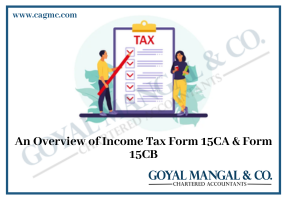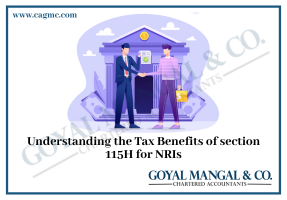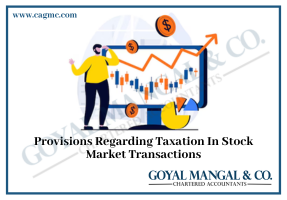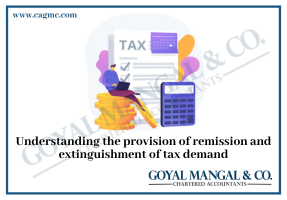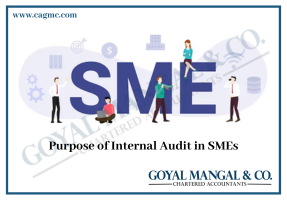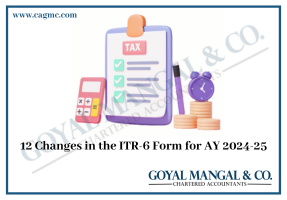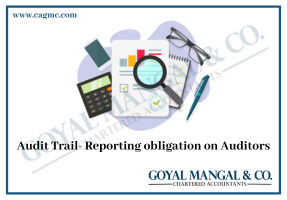
Income that is tax-free is called exempt income; everyone wants their income to be tax-free so that less tax or no tax could be paid for the income generated through them. There are various sub-sections in Section 10 of the Income Tax Act, of 1961 that define what kind of income is exempt from tax. This can include anything from an agricultural allowance to a house rent allowance. Here are a few types of income and benefits that are tax-free under certain circumstances. Several health benefits are tax-exempt, including those from employer-sponsored supplemental disability insurance purchased with after-tax dollars, private insurance plans funded with after-tax dollars, most benefits from employer-sponsored health insurance plans, and workers’ compensation. In this article, we’ll discuss Income which does not part of Total Income, in great detail.
Also, Gifts that exceed a certain value may trigger a gift tax on the person giving the gift. However, any gift of less than $16,000 (for 2022) or $17,000 (for 2023) is exempt from income tax. Regardless of value, some gifts, including tuition and medical expenses paid for someone else and charitable donations, are exempt from income tax. Charitable contributions are also tax-deductible.
What is Exempted Income?
The term “Exempt Income” refers to any income that a person receives or earns during a financial year and is treated as non-taxable. Under the Income Tax Act, 1961 certain sources of income are exempt from taxation if they follow the rules and regulations laid down by the Act. Exempt income can take various forms, including interest from agricultural sources, PPF interest, long-term capital gains from stocks and shares, and many more.
Individuals Receiving Allowances Exempt
There are certain kinds of reliefs that are treated as special reliefs under this section of the Income-Tax Act, of 1961. Exemption from the special surcharge under Section 10(14) (i) and Section 10(14) (ii) is given to certain individuals.
- Under this section of the Income-tax Act, special reliefs have been granted to the judges of the High Court.
- UNO employees are entitled to this contribution.
- Judges of the Supreme Court and the High Court are entitled to the supplement.
- Those who are Indian citizens working as civil servants outside India are the beneficiaries of this grant.
Scope and applicability of Section 10 of the Income Tax Act, 1961
The exemption scheme under Section 10 of the Act applies to assesses who are subject to the provisions of Section 5 (the extent of total income) and Section 6 (the determination of residential status in India) of the Function as read with their respective income-tax tables. In other words, any resident or non-resident of India can get the benefit of exemption under Section 10 of the Act, subject to the provisions and related income tax rules therein.
Exemptions under Section 10 of the Income Tax Act, 1961
The following are the exemption under Section 10 of the Income Tax Act, of 1961:
Agricultural Income 10(1)
The term “agricultural income” under Section 10(1) also includes all income derived from basic operations or subsequent operations that are used to make agricultural products suitable for collection and sale on the market. These operations include activities like tilling the soil, sowing seeds, cleaning, fermenting, drying, crushing, etc. All income derived from all these activities or operations (whether manual or mechanical) will come under “agricultural income” under Section 10(1).
Amount accepted from the income of the HUF by an individual who is a member of the HUF [Section 10(2)]
In accordance with Section 10(2) of the Act, if a member of the HUF (Hindu Undivided Family) receives his share of the family income or his share of the undivided family property, this income is fully exempt from income tax. In this regard, it is pertinent to note that the personal income of a HUF member is not exempt from income tax. Only money given to him from family income or undivided family property belonging to the HUF is exempt from income tax.
Section 10(2) (a): Exemption of income from a partner company
A company partner has several advantages. Let us go over the benefits provided by Section 10(2a). The profit achieved by a co-owner or partner is exempt from tax. A Partnership Firm must be classified and taxed as a partnership firm under the Income Tax Act, of 1961. Such exemption is limited to the share of profits of the partners of the LLP or firm.
Example: The profit of partner firm XYZ for the fiscal year 2021–22 is Rs. 5,00,000/-. Mr. Sharma’s share in the partnership firm is 40%. So, the business income earned by Mr. Sharma is Rs 2, 00,000, which is 40% of Rs 5 lakh. This sum of Rs 2 million is exempt from tax.
Section 10(4): Exemption of NRI Income
Non-Resident Indians are eligible for tax exemption on certain investments. These include:
- Income derived from interest on bonds or government securities listed for exemption.
- Income from the premium on the redemption of these bonds
- Interest income from a loan on a non-resident (external) account
- Interest income earned by a resident outside India on credit in a non-resident (external) account.
Section 10(5): Exemption from the travel allowance for holidays
According to Section 10(5), an employee can get a tax exemption on vacation. Under this section of the Income Tax Act, all employees (including Indian and foreign nationals) are eligible for this benefit. The terms for this section are:
- A travel allowance must be received from the current employer for the travel of the employee or individual and his or her family in the given accounting period.
- It must be received by the current or previous employer in connection with their future travel.
Payments received by individuals, who are not Indian citizens [Section 10(6)]
People who are not citizens of India are eligible for income tax exemption under the provisions of Section 10(6) of the Act. They are discussed as follows:
- Payments made to specified diplomats and their staff [Section 10(6)(ii)]
- Remuneration of a foreign employee and non-resident member of the crew [Section 10(6)(vi), (viii)]
- Payment to a foreign trainee [Section 10(6)(xi)]
- Tax paid for a foreign company generating income by way of royalty or fees for technical services [Section 10(6A)]
- Tax paid for a foreign company or non-resident individual in connection with other income [Section 10(6B)]
- Tax paid for a foreign government or foreign company generating income by leasing aircraft or aircraft engines [Section 10(6BB)]
- Technical fees accepted by a foreign company notified by the central government [Section 10(6C)]
- Royalty or fees for technical services payment by NTRO to a non-resident [Section 10(6D)]
Allowance or perquisites are given to government employees working outside India [Section 10(7)]
As per Section 10(7) of the Act, any allowance or benefit provided or permitted as such outside India by the Government of India to an Indian citizen for rendering services outside India shall be exempt from income tax.
Gratuity [Section 10(10)] of Income Tax Act, 1961
In accordance with Section 10(10) of the Act, tips (if the tip is voluntarily paid by the employer as an award for long-term service, usually more than 5 years) are thus received upon retirement, termination of employment, or death of an individual employee.
Remuneration received now of voluntary retirement [Section 10(10C)]
In accordance with Section 10(10C) of the Act, if an employee receives any compensation at the time of voluntary retirement or termination of employment, such payment is exempt from income tax provided the following conditions are met:
- Compensation is received by an individual employee at the time of voluntary retirement, termination, or voluntary separation in the case of a public sector company.
- The maximum amount of exemption under this clause is Rs. 5, 00,000.
- The compensation given should be in accordance with the provisions of Rule 2BA of the Income Tax Act, 1962.
Section 10(10CC): Tax Exemption on Perquisites paid by the employer.
Sometimes employers pay fringe benefit taxes on behalf of their employees. In such a case, the tax paid by the employer is considered exempt from tax in the hands of the employee.
Section 10(10D): LIC due Tax Exemption
The maturity amount and bonus received under LIC insurance by an Indian citizen are tax-free under Section 10(10D) of the Income Tax Act. However, below are some criteria to get the benefit:
- Insurance policies issued before April 1, 2012, with a premium that does not exceed 20% of the sum insured.
- Insurance contracts were issued after April 1, 2012, and the premium paid on this insurance does not exceed 10% of the sum insured.
- Maturity and amount of bonus on life insurance to a person with a disability or illness specified in Sections 80U and 80DDB.
Section 10(11): Exemption from payments made to the Pension Fund and Sukanya Samriddhi Account
Any amount received as a contribution or interest from a provident fund account on retirement or termination of service is exempt. Any payment made from the Sukanya Samriddhi Account is also eligible for tax exemption under Section 10(11).
Section 10(10BC): Exemption from disaster-related compensation
An employee is eligible for tax exemption if he receives natural calamity compensation from the central government, state government, or local authority.
House Rent Allowance (HRA) [Section 10(13) (A)]
In accordance with Section 10(13A) of the Act as read with Rule 2A of the Income Tax Rules, an individual employee receiving House Rent Allowance (HRA) enjoys exemption at least to the extent of:
- Fifty percent of salary for metro cities (i.e., Kolkata, Delhi, Mumbai, and Chennai) or 40% of salary in the case of other cities.
- HRA received.
- Paid rent minus 10% of salary.
Section 10(14): Exemption from special contribution
The employer can offer its employees a special allowance to support the employee’s expenses. These expenses should be incurred by the employee in the performance of his duties. The amount that the employer provides to his employee as a special contribution is not fixed, but the contributions must be used only for the stated purpose.
This section is further divided into two parts, viz.
- Exemption from contribution under Section 10(14)
- Travel allowance: This allowance is provided by the employer to cover the employee’s travel expenses in the performance of official duties.
- Daily Allowance: An employee can get a daily allowance to cover their daily expenses. This type of allowance is provided when the employee is not at the place of actual work performance.
- Uniform Allowance: Employees who need to purchase or maintain a uniform while on duty may receive a uniform allowance.
- Academic or Research Contribution Allowance: This allowance is given to encourage employees to engage in research, academic, or educational activities.
- Assistant Allowance: This allowance is provided to cover the cost of hiring an assistant to carry out official duties.
- Exemption from contribution under Section 10(14)
The allowance is provided to cover expenses incurred in the performance of the function. If these contributions are received above the prescribed limits, they are then taxable in the hands of the employees. Allowances for this section are prescribed in Rule 2BB.
- Child Education Allowance: An allowance of Rs. One hundred per month per child, up to two children.
- Tribal Area Allowance: An allowance of Rs. Two hundred per month for tribal areas, plan areas, and agency areas
- Field Buffer Area Allowance: An employee can claim a buffer area allowance of Rs. 2,600 per month or a border area allowance.
- Frontier Territory Allowance: This allowance is admissible to Army personnel and ranges from Rs 200 to Rs 1,300 per month.
- Special Compensatory Allowance: Allowances such as High-Altitude Allowance, Adverse Climate Allowance, Snow Area Allowance, and Avalanche Allowance are offered to employees working in hilly areas of the country, ranging from Rs. Three hundred to Rs. Seven thousand per month.
- Counter-Insurgency Allowance: Armed forces individuals living away from their homes get this allowance with a limit of Rs 3,900 per month.
- High Active Field Area Allowance: Armed Forces personnel get this allowance subject to a limit of Rs. 4,200 per month.
- Island Duty Allowance: Members of the Armed Forces posted in the Andaman and Nicobar Islands and the Lakshadweep Group of Islands are eligible for this allowance, subject to a limit of Rs. 3200 per month.
Summary chart of exemptions under Section 10 of the Income Tax Act, 1961
| Fully exempt under Section 10 | Partially exempt under Section 10 |
| Agricultural income | Gratuity |
| Government awards | Leave encashment |
| The compensation received in lieu of disasters | House Rent Allowance (HRA) |
| Interest in the NRE account of a person resident outside India | NPS withdrawals in cases of closing or opting outs |
| Pension received by gallantry awards recipients | Receipts from LIC |
| Share of partner | Commuted pension |
| Allowances paid by the Indian government to Indian citizens outside India | Clubbed income |
| Received by a member of the HUF (Hindu Undivided Family) | Income of member of ST (Scheduled Tribe) |
| – | Retrenchment compensation |
Conclusion
Unfortunately, despite the benefits provided by the few exemptions available, only around 6.25% of India’s population pays income tax, compared to 45% of the US population paying income tax. This poor income tax scenario is miserable. It is no wonder that frequent borrowing (with lots of strings attached) from international bodies has become a common culture in our government.
It is easy to blame the complex tax regime, corruption, or the poverty of the nation, but if this apathy toward paying income tax is not addressed as soon as possible, the future will look bleak. The blame game for the tax collector is slowly being dismantled in the branch where we are based, at the high cost of inviting economic disasters for future generations.

